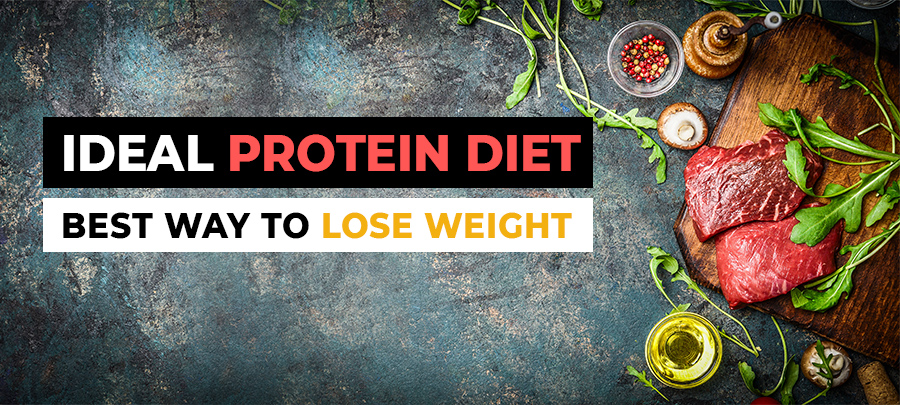Don’t we all hope that there was some way to magically lose weight overnight? If you have tried to lose weight in the past, chances are that you may or may not have been successful in doing so. It’s time to change that – and this is where the Ideal Protein Diet comes into play.
Created by Dr. Tran Tien Chanh and Olivier Benloulou, the Ideal Protein Diet was used about 20 years ago to provide a safer and easier way for their patients to lose weight. Several studies suggest that a protein-rich diet leads to weight loss – and this is why the ideal protein diet is your way to shedding those pounds.
This blog takes a deep dive into the ideal protein diet, along with its pros, cons, and how it works towards weight loss in a much quicker and effective way.
What Is The Ideal Protein Diet | Phase 1 | Phase 2 | Phase 3 | Phase 4 | Approved List Of Foods | Benefits | Drawbacks | 7-Day Meal Plan | Key Takeaways | FAQs
What Is The Ideal Protein Diet?

The ideal protein diet is a modified version of a ketogenic diet but a more effective way of burning off fat. Keto diet forces you to replace carbs with fats, putting your body in a state of ketosis (a metabolic state characterized by raised levels of ketone bodies in the body tissues, which is typically pathological in conditions such as diabetes, or maybe the consequence of a diet that is very low in carbohydrates.)
The ideal protein diet takes the approach of increasing protein and temporarily reducing fats in your diet. This pushes your body to burn its fat reserves to produce energy throughout the day.
The primary goal of the ideal protein diet is to restrict the intake of carbohydrates to deplete the glucose in your body. It takes about three days for your body to completely exhaust out the glucose, encouraging the burning of fat for fuel.
Trying to incorporate more protein in your diet? Check out these 4 high protein vegetarian recipes!
The 4 Phases Of Ideal Protein Diet And What To Eat
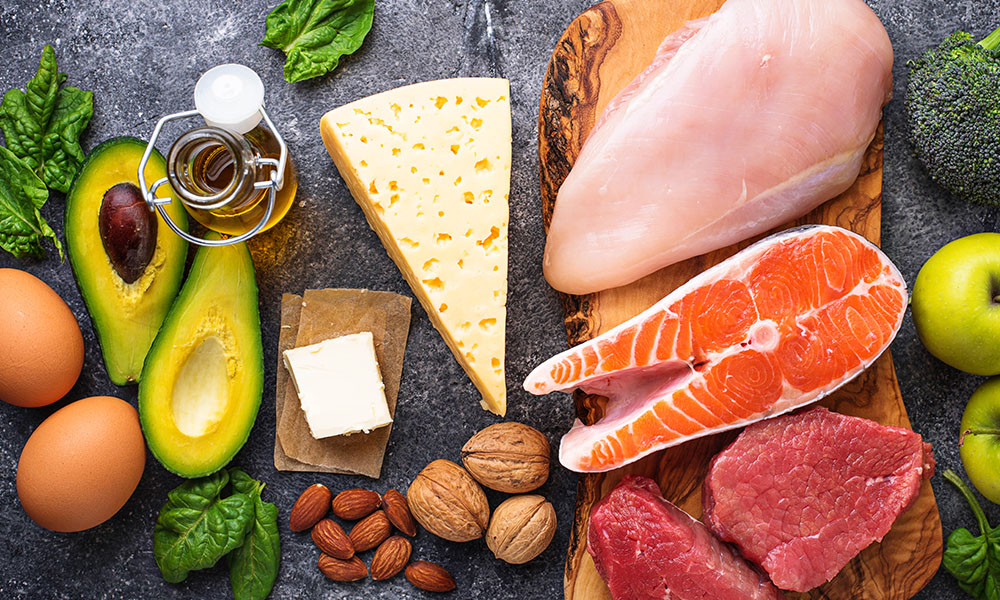
Phase 1: Launching Into Weight Loss
Objective: Kickstart your weight loss by drastically limiting carbs from your diet to push the body into burning the reserved fats.
What to Eat
- Ideal Protein Meals: If you’re going for the pre-packaged options provided by the Ideal Protein program for breakfast, lunch, and snacks, then go for whatever menu they’ve offered that fits your macros.
- Self-Prepared Dinner: If you’re cooking yourself, then incorporate a lean protein source (chicken breast, fish, tofu), along with by a generous serving of veggies from the approved list (leafy greens, cucumbers, bell peppers) so your fat and carb consumption is low.
Phase 2: Transition and Adjustment
Objective: Move into a more balanced diet by cutting back on the Ideal Protein meals and adding more of your self-prepared meals.
What to Eat
- Ideal Protein Meals: Cut these down to two per day, focusing on breakfast and snacks.
- Self-Prepared Meals: Add two, typically lunch and dinner. For this, you need to stick to Phase 1’s diet composition. But you’ll have to increase the protein variety slightly and add a wider range of veggies.
Phase 3: Pre-Maintenance
Objective: In this phase, you’re going to bring carbohydrates back into your diet to prepare the body for a more sustainable, long-term eating pattern.
What to Eat
Ideal Protein Meal: Restrict this to one a day, usually for breakfast.
Self-Prepared Meals:
- Breakfast: Add in some complex carbs such as chia pudding, oatmeal or whole-grain toast.
- Lunch and Dinner: Stick to a lean protein source, more portions of vegetables, and go for healthy fats like avocados or nuts.
- Snacks: Munch on some fresh fruits or a small portion of whole-grain crackers.
Phase 4: Maintenance and Sustainable Diet
Objective: Move back to eating as the phase 3 while maintaining weight loss achievements. Focus on incorporating healthier food options with a focus on balanced macronutrients.
What to Eat
- Breakfast: Whole grains, fruits, and protein sources like eggs or Greek yogurt.
- Lunch and Dinner: Your plate should look colorful with 1/2 vegetables, 1/4 lean protein, and 1/4 whole grains. Don’t forget to add healthy fats in cooking or as dressings.
- Snacks: Include a variety of fruits, nuts, and whole-grain products. The key is to cut back on processed foods entirely.
Want some quick ways to add protein to your diet? Check out these 5 protein smoothie recipes!
List of Approved Ideal Protein Diet Options
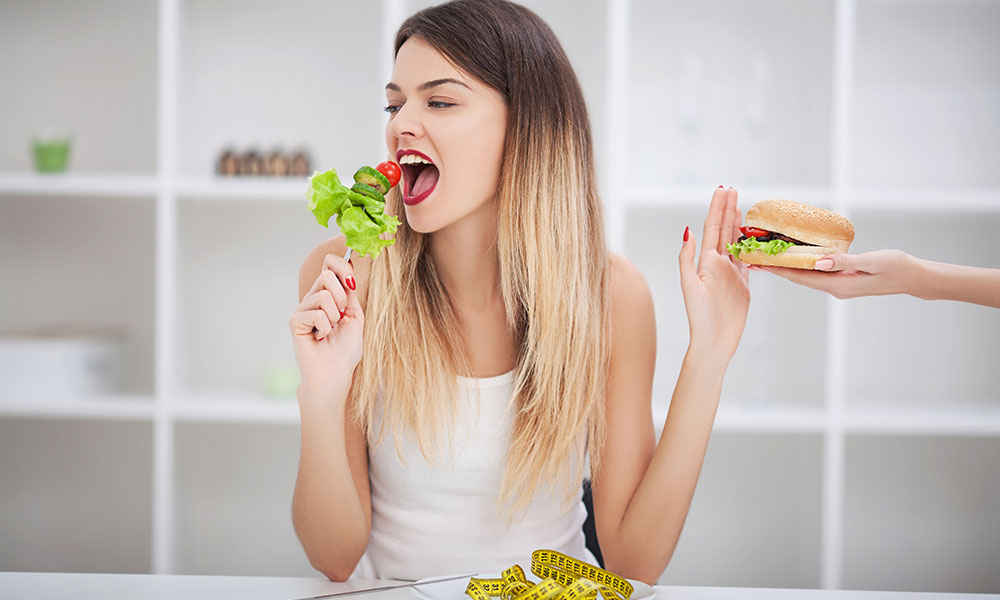
Proteins
- Chicken breast
- Lean beef
- Fish (e.g., salmon, tuna)
- Seafood (e.g., shrimp, scallops)
- Turkey
- Eggs
- Ideal Protein’s own pre-packaged protein options
Fats
- Olive oil
- Coconut oil
- Avocado (limited quantities)
- Nuts and seeds (in later phases)
Carbs
- During the initial phase, carb intake is highly restricted to mainly vegetables and the Ideal Protein pre-packaged meals.
- Whole grains (in later phases)
- Legumes (in later phases)
Vegetables
- Leafy greens (e.g., spinach, kale)
- Cruciferous vegetables (e.g., broccoli, cauliflower)
- Bell peppers
- Cucumbers
- Zucchini
- Asparagus
Fruits
- Berries (in moderation, in later phases)
- Apples (in later phases)
- Oranges (in later phases)
- Other low-glycemic fruits (in later phases)
Beverages
- Water
- Herbal tea
- Coffee (black or with permitted sweeteners)
- Ideal Protein’s own pre-packaged beverages
Want to incorporate supplements? Learn more about mass gainers and whey protein!
4 Benefits of an Ideal Protein Diet
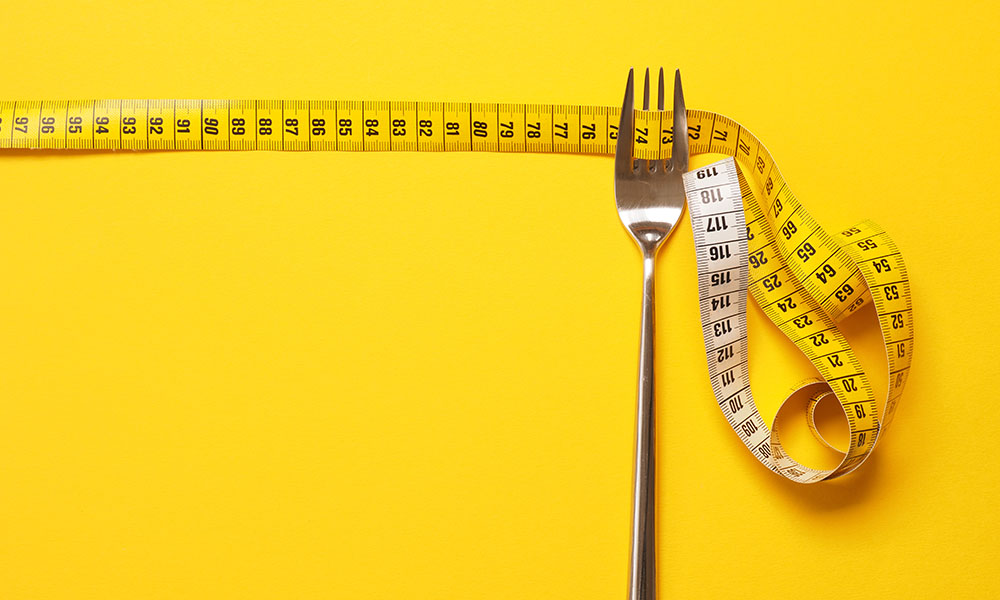
There are a number of benefits associated with the ideal protein diet apart from quickly losing weight. There are a number of benefits associated with the ideal protein diet.
1. Helps In Losing Weight
Since the ideal protein diet is a modified ketogenic diet, studies suggest that it is a good way of losing weight.
There are a number of studies that suggest that keto diets are a great way of losing weight and has proven to be better than a low-fat diet. It is also considered a more significant success since it makes it easier for people to maintain their weight once they have lost it.
Here’s another proper guide if you’re looking to lose weight.
2. Easy To Follow
The ideal protein diet is heaven for a busy person since most of its meals are premade except for dinner. Purchasing pre-made meals means that you consume less time in planning, shopping, and cooking, freeing time for you in a busy schedule.
All in all, the ideal protein diet has the lowest amount of prep work when compared to any other kind of diet.
Looking for quick and easy-to-follow options? Check out these 5 healthy gluten-free snack ideas!
3. Improves Insulin Sensitivity And Blood Sugar Regulation
Since you are losing fat, you are automatically at less of a risk of type 2 diabetes and metabolic syndrome than someone that is overweight.
Studies also suggest that ketogenic diets improve your insulin sensitivity by 75% which is also a significant push towards preventing type 2 diabetes.
Try these 4 low fat dessert options to satisfy those sweet-tooth cravings in a healthy way!
4. Prevents Heart Diseases
Studies suggest,
“Obese people who followed a ketogenic diet experienced a significant decrease in systolic and diastolic blood pressure, visceral fat, fasting blood sugars, blood insulin levels, and blood triglyceride levels”
This means that people that have tried ketogenic diets or its modified version (ideal protein diet) improve the two risk factors of heart diseases – total, bad LDL cholesterol.
Check out these 5 vegetarian recipes under 500 calories to stay on-track with your weight loss journey!
Drawbacks
There are a number of drawbacks that are associated with this diet, and it has met with a lot of criticism over the years. Some of the drawbacks include:
- Costly – A partner clinic could charge you $320 to $450
- Highly Processed – Since they are pre-packaged meals, it means that they are highly reprocessed
- Very Restrictive – In the starting phase, you are bound to minimum options
- Limited outside North America – only 3,500 clinics in the world, the majority of which are in North America
- Side Effects – The drop in calories could cause nausea, headaches, constipation, hair loss and irregular menstrual cycle
Want an even more easier-to-follow diet option? Check out the flexitarian diet!
7-Day Ideal Protein Meal Plan
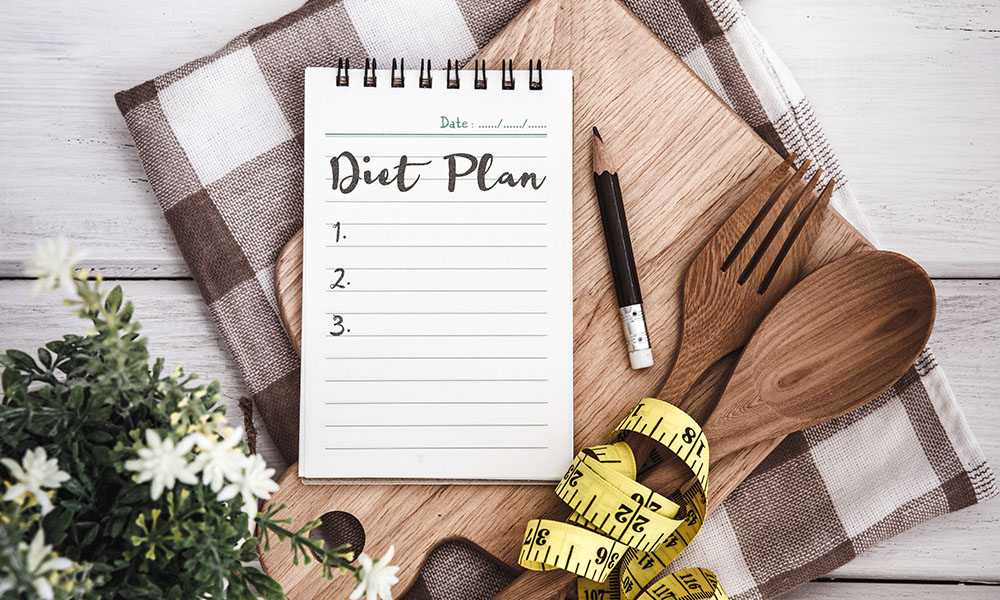
If you’re struggling to plan out your meals according to the ideal protein diet, here’s a quick plan you can take inspiration from.
| Day / Meal | Monday | Tuesday | Wednesday | Thursday | Friday | Saturday | Sunday |
|---|---|---|---|---|---|---|---|
| Breakfast | IP Chocolate Shake | IP Vanilla Pudding | IP Omelet | IP Pancakes | IP Maple Oatmeal | IP Mushroom Soup | IP Cappuccino |
| Lunch | Salad + IP Dressing | Vegetable Stir Fry + IP Soup | Grilled Zucchini + IP Soup | Kale Salad + IP Dressing | Steamed Broccoli + IP Soup | Raw Veggies + IP Dressing | Asparagus + IP Soup |
| Snack | IP BBQ Crisps | IP Salt & Vinegar Crisps | IP Dill Pickle Zippers | IP Southwest Cheese Curls | IP White Cheddar Ridges | IP Garlic & Herb Chips | IP BBQ Crisps |
| Dinner | Grilled Chicken + Vegetables | Lean Beef Stir Fry + Vegetables | Baked Fish + Steamed Greens | Shrimp Salad | Grilled Turkey + Mixed Salad | Lean Pork Chops + Cauliflower Rice | Salmon + Roasted Brussels Sprouts |
However, always make sure that whatever plan you design suits your fitness goals and fits your macros. Make sure you’re wearing the right workout clothes when hitting the gym so not only are you comfortable, but also seeing the results of a balanced, protein-rich diet and an intense training routine!
No time to cook? Try these healthy on-the-go snacks for busy people!
Key Takeaway
The ideal protein diet has its pros and cons but so does every other diet under the sun. It is just a matter of your goals and how hard you are willing to go to reach them.
The ideal protein diet is a modified version of the keto diet, and although it has a lot of barriers, the ideal protein diet can be a great option if you are looking to lose weight.
Is the Ideal Protein Diet too harsh? Why not try a different diet instead!
FAQs
The Ideal Protein diet is a plan that promotes a protein-rich and low-carb and low-fat diet. This means you’re consuming less carbs such as breads and sugar and more lean protein sources such as fish and chicken. This allows your body to burn stored fat, allowing you to lose unnecessary fat, and ultimately weight. This diet plan has 4 phases, each created so you lose weight in a healthy manner and adapt a healthy, sustainable diet in the long run. With lesser carbs in your diet, your body will be constantly in a maintenance phase where it utilizes the stored fat for energy, not only losing weight but also maintaining your current weight. Eating healthy proteins will give you lean muscles and ensure you’re healthy.
If you’re following the Ideal Protein diet, then you’ll experience a fairly fast weight loss, especially in the beginning. An average man can lose anywhere between 5-7 pounds per week and a woman might lose around 3-5 pounds. Other than losing weight, you’ll also have healthy blood sugar levels and an overall improved heart health. You’ll also learn sustainable healthy eating practices that you can include in the long run. Keep in mind that these are just estimates and your results will vary based on how your body responds to this diet plan.
The Ideal protein diet comprises of 4 phases from the starting stage of weight loss to maintenance. This includes:
- Phase 1 – Weight Loss: You start by eating mainly Ideal Protein foods and one meal self-made yourself, lowering carbs and fats. You stay here until you reach 70-80% of your weight loss goal.
- Phase 2 – Transition: You reduce Ideal Protein meals to two a day and add another self-prepared meal, still keeping carbs and fats low. This phase helps you get closer to your goal.
- Phase 3 – Pre-Stabilization: Here, you start to add carbs into your diet again and decrease Ideal Protein meals to one per day, preparing your body to maintain weight loss.
- Phase 4 – Maintenance: You return to a more normal diet but stick to healthier choices to keep the weight off. This phase focuses on sustainable, balanced eating habits.
The phase to phase division of this diet plan ensures that you kickstart your weight loss in the beginning, followed by a long-term, sustainable healthy diet.

